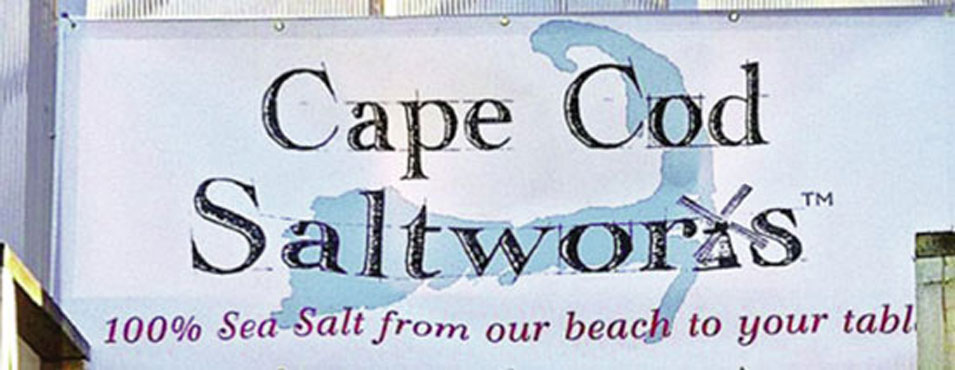The Modern Alchemy of Salt
Salt is a common ingredient found in just about every kitchen in America. Not only is salt an essential part of cooking, but it’s how we keep fluids in our bodies. Without it we would suffer from dehydration and we would not survive. This commonplace yet important item has also found its way into thousands of products and is involved in the manufacture of pharmaceuticals, fertilizer and soap. Salt can be used as a cleaning agent; it keeps our roads free of ice and snow in the winter; and it can be used as a mouthwash.
Before refrigeration, we utilized salt for preserving meat, vegetables, cheese and fish. The fortunes of pre-industrial nations rose and fell depending on their access to salt, literally making it worth its weight in gold. From early history to the present day people have obtained salt from three different sources: rock salt (from mineral deposits in the ground); seawater; and salt brine, which comes from springs, lakes or wells.
On a cold and partly cloudy day in February I drove to the Cape Abilities farm in Dennis to find out how local sea salt is manufactured. I was meeting Penny Lewis and Jan Burling who would show me how they turn seawater into salt and teach me a little bit about the history of salt making on Cape Cod. Jan and Penny met me in front of their new greenhouse, built and maintained by members of the Cape Abilities family. But unlike the other greenhouses on the farm, they don’t grow flowers or vegetables. Instead they use the heat and light of the greenhouse to evaporate seawater so the salt crystals left behind can be harvested.
Jan and Penny are the owners and proprietors of Cape Cod Saltworks and they’ve been working for several years to bring sea salt to your kitchen table. These two women have known each other for 35 years, vacationing together with their families on Cape Cod and traveling the world together. On a trip to Peru, Penny first witnessed the locals harvesting salt from manmade salt ponds. Many years later the two were at lunch together discussing ideas for starting a local business when they hit upon the idea for making sea salt. This salt would be produced without chemicals and additives and would capture the briny taste of the ocean.
Jan and Penny first experimented with a small 16-foot greenhouse. Built in a backyard, it was filled with seawater via several five gallon buckets carried by hand from water’s edge to their truck. As Penny recalled, “People watched us hauling these buckets from the beach to our truck and must have wondered what the heck was going on but never said a word.” On the floor of the small greenhouse was a very shallow area that they filled with the hand-collected water. Once poured into the plastic-lined space at the base of the greenhouse, the sea water quickly evaporated, leaving in its place white “gold.” Jan and Penny explained that solar evaporation is not a new method for getting salt. In fact it was used by cultures going back as far as 6500 B.C., and was also used more recently by Cape Codders of the nineteenth century.
Here on Cape Cod salt was a very necessary item to insure the survival of early colonists. However, salt was not initially produced locally. It was imported fairly cheaply by British merchants who enjoyed a trade monopoly on all goods coming into the American colonies. When salt was produced locally it was a very expensive process. Colonists could boil down seawater in large cauldrons to produce salt, but it required expensive labor to fill the pots and too much wood to keep the fires going. The cost of the wood alone raised the price too high to compete with cheap imports. When the American Revolution began, the supply of salt was cut off and the colonists found themselves faced with the inability to preserve food, and therefore faced the prospect of starvation.
It is often said that necessity is the mother of all invention, and in this case a Cape Codder created a new way to produce salt. In 1777 John Sears, a native of Dennis, was the first person known to have built an open-air vat to evaporate seawater on Cape Cod. Getting the water into the vat was a challenge that Sears initially solved by using a plundered bilge pump from the wreckage of the HMS Somerset that had sunk off the coast in 1778. After a bit of tinkering and the addition of a windmill to pump seawater and a roof to add protection from the elements, the saltworks were perfected.
When the revolution ended in 1783, Americans found that they were still under embargo from British goods, including salt. This kept the price of Cape Cod salt valued at the high price of eight dollars a bushel compared to a pre-revolution low of fifty cents. Huge profits, due to high prices, led to saltworks being constructed all over the shores of the Cape. They grew to be so numerous and so vital that British naval vessels threatened them with destruction during the War of 1812. But while war was being waged, a new source of salt was being developed in upstate New York. At sixty cents per bushel the salt springs of Onandaga County in New York could ultimately furnish cheaper salt than Cape Cod could. By the late 1800s production on Cape Cod ended, the saltworks were torn down, and the memory of it all was lost except as a footnote of history.
Lost, that is, until revived locally by Cape Cod Saltworks in 2011. Before Jan and Penny opened the doors to their new greenhouse they were joined by a small crowd of staffers and program participants who greeted them with handshakes, hugs and huge smiles. They have been greatly assisted by Cape Abilities, who believes in creating local partnerships with an eye towards creating job opportunities for the adults in their program. Expansion of the new business couldn’t have happened without this help.
When time came to open the double doors of the greenhouse, we were all treated to a very welcome outpouring of hot air as well as a view of a double row of evaporation tables coated with salt. These tables are really plastic-lined shallow basins with legs. When the seawater evaporates it leaves behind salt crystals that are then scraped from the surface of the plastic.
Modern salt making still utilizes the sun for evaporation but is further aided by the addition of a greenhouse that collects and concentrates the rays of the sun. Solar power also provides the energy to run the fans, perched on the edge of each table, as well as the roof vent. This helps to reduce the cost of utilities and speeds up the time it takes to evaporate the seawater. And now, rather than carry water from the beach, the collection of seawater is aided by a pump which fills barrels placed in the bed of their truck.
In peak season the tables are filled with seawater and salt can be harvested in cycles of a day or two. Once it’s harvested the salt is packed into two-and-a-half ounce jars and sold at many local farmers’ markets and at as many as forty stores and markets.
For a complete list of places stocking Cape Cod Saltworks sea salt, please see their webpage. And if you happen to see them at a farmers’ market this summer stop by and try a sample!
Stephen Farrar is a local author who has interests in food, gardening and local history. He lives in Marston Mills with his wife Judy and sons Erik and Max.





